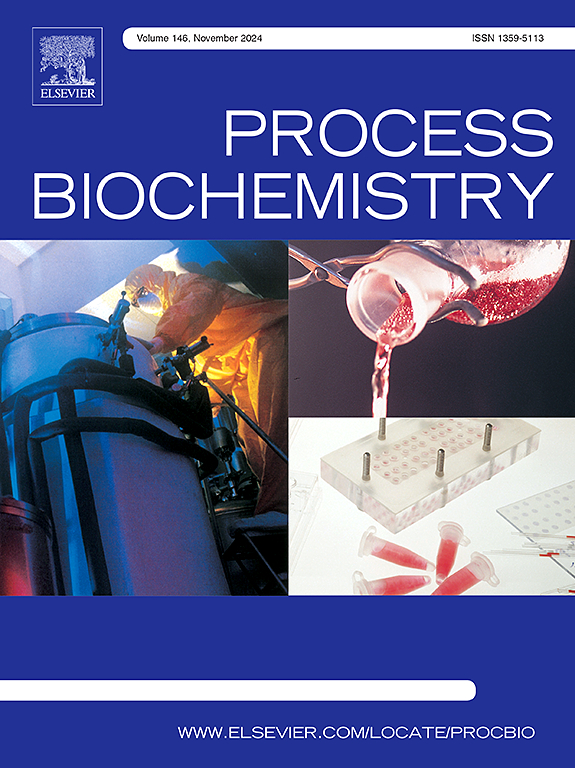固定化儿茶酚-1,2-双加氧酶流动微反应器的研制及其生物催化生产顺式、顺式粘膜酸的研究
IF 4
3区 生物学
Q2 BIOCHEMISTRY & MOLECULAR BIOLOGY
引用次数: 0
摘要
通过稳定固定儿茶酚-1,2-双加氧酶,开发了一种低成本的微反应器,用于儿茶酚的流动生物催化生产顺式,顺式粘液酸,这是工业相关己二酸的直接前体。采用简单、经济的软光刻技术制造了不同设计的聚二甲基硅氧烷微反应器,并采用不同的固定策略进行了测试,重点是保持酶的催化活性和稳定性。最佳固定策略为氨基硅烷化共价固定,接枝戊二醛接枝。在室温下,通过50 µM儿茶酚流测定黏液酸的产量来评估固定化酶的生物催化活性。在5小时的时间内,儿茶酚的转化率高达95% %,仅使用0.32 nmol的固定化蛋白即可处理高达180 mL的体积,产生1.33 mg·L−1·h−1。这项工作证明了利用微反应器为基础的流动生物催化可持续生产粘膜酸的可行性,并强调了其在工业规模上的应用前景。本文章由计算机程序翻译,如有差异,请以英文原文为准。
Development of a flow microreactor with immobilized catechol-1,2-dioxygenase for the biocatalytic production of cis,cis-muconic acid
A low cost microreactor was developed by stable immobilization of catechol-1,2-dioxygenase for the flow biocatalysis of catechol to produce cis,cis-muconic acid, a direct precursor of industrially relevant adipic acid. The microreactors of polydimethylsiloxane were manufactured with different designs by straightforward, cost-effective soft lithography techniques, and were tested with different immobilization strategies focused on preserving enzyme catalytic activity and stability over time. The best immobilization strategy was covalent immobilization by amino-silanization followed by glutaraldehyde linker grafting. The biocatalytic activity of the immobilized enzyme was assessed by measuring muconic acid production through the flow of 50 µM catechol at room temperature. Catechol conversion rates of up to 95 % were achieved over a 5-hour period, and volumes of up to 180 mL were processed using only 0.32 nmol of immobilized protein, resulting in the production of 1.33 mg·L−1·h−1. This work demonstrates the feasibility of using microreactor-based flow biocatalysis for sustainable muconic acid production and highlights its promising application at industrial scale.
求助全文
通过发布文献求助,成功后即可免费获取论文全文。
去求助
来源期刊

Process Biochemistry
生物-工程:化工
CiteScore
8.30
自引率
4.50%
发文量
374
审稿时长
53 days
期刊介绍:
Process Biochemistry is an application-orientated research journal devoted to reporting advances with originality and novelty, in the science and technology of the processes involving bioactive molecules and living organisms. These processes concern the production of useful metabolites or materials, or the removal of toxic compounds using tools and methods of current biology and engineering. Its main areas of interest include novel bioprocesses and enabling technologies (such as nanobiotechnology, tissue engineering, directed evolution, metabolic engineering, systems biology, and synthetic biology) applicable in food (nutraceutical), healthcare (medical, pharmaceutical, cosmetic), energy (biofuels), environmental, and biorefinery industries and their underlying biological and engineering principles.
 求助内容:
求助内容: 应助结果提醒方式:
应助结果提醒方式:


